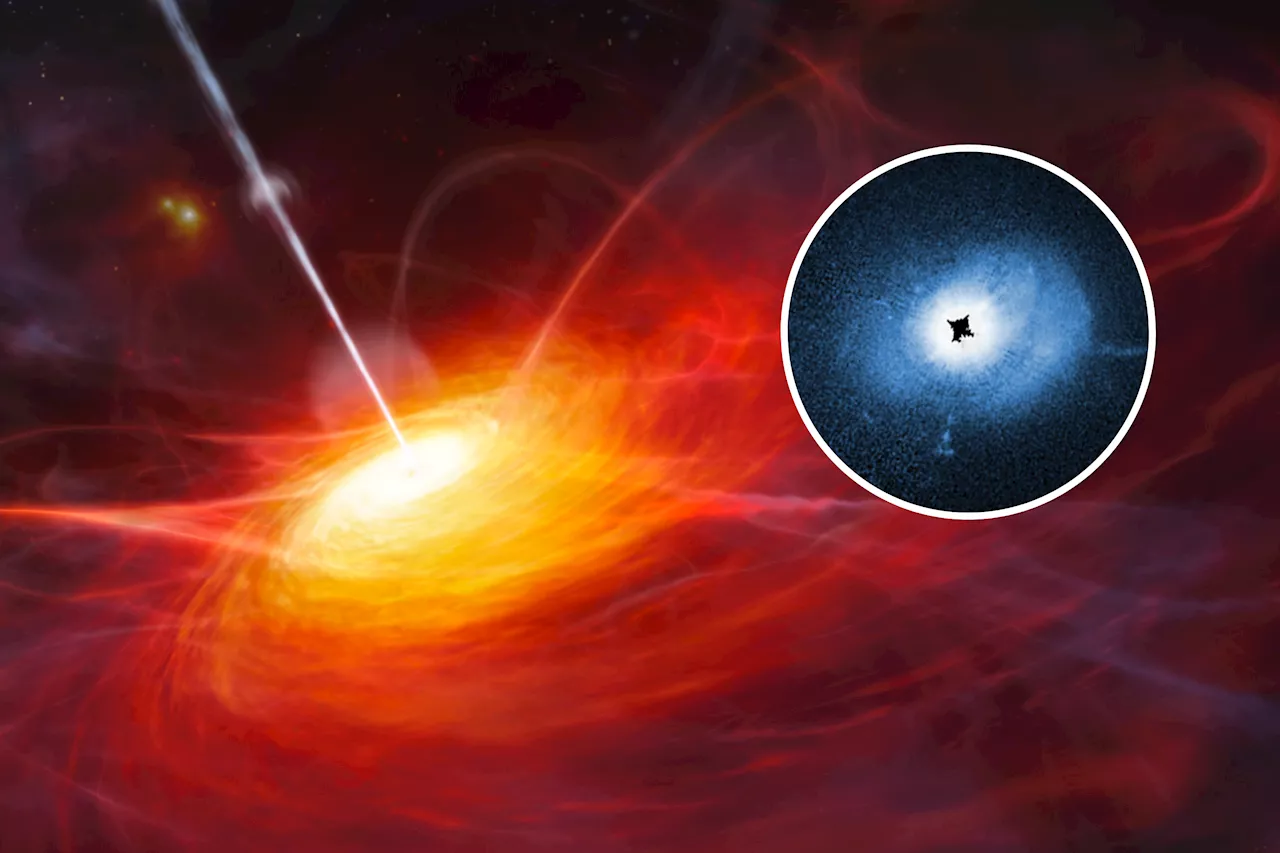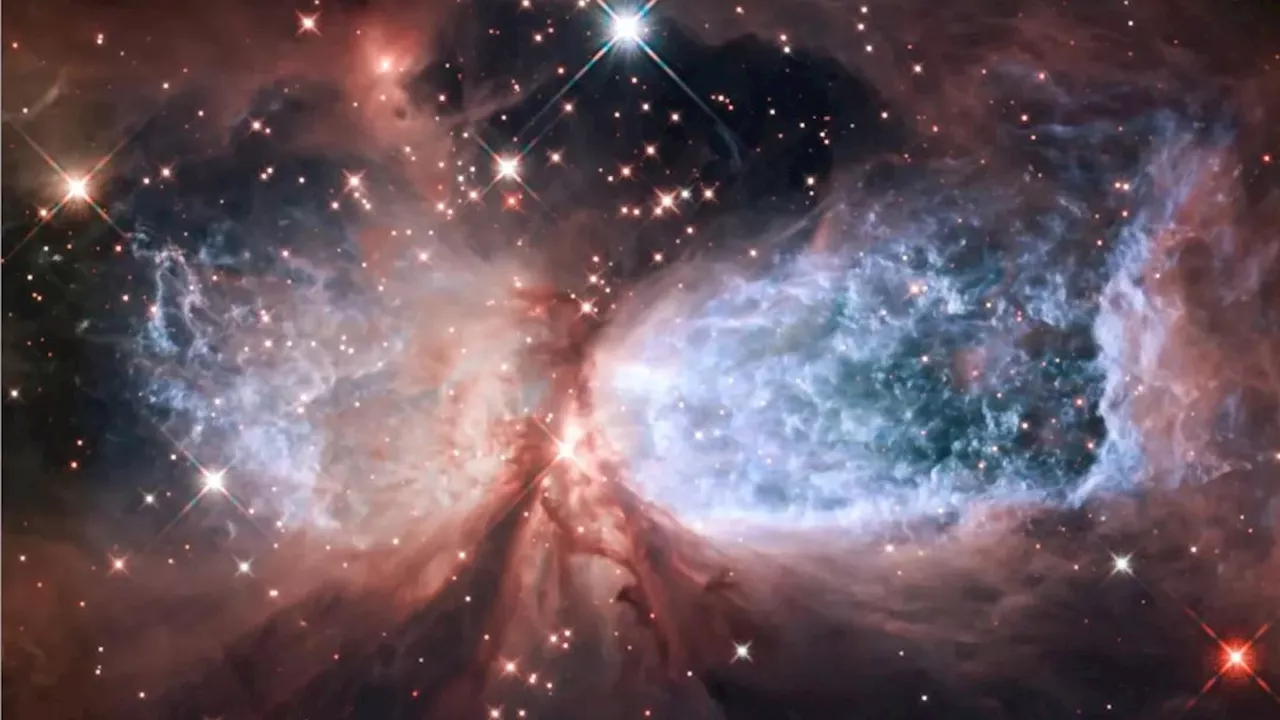The Hubble Space Telescope has captured a stunning image of a star-forming region known as Sharpless 2-106, nicknamed the 'celestial snow angel' for its distinctive shape. The image reveals the violent birth of a star, with jets of energetic material ejected from its poles and creating intricate details in the surrounding gas and dust.
This stunning image from the Hubble Space Telescope depicts a star-forming region called Sharpless 2-106 , or S106 for short. Characterized by its'wings,' it is classified as a bipolar nebula and affectionately nicknamed the'celestial snow angel.' The star-forming region, which is about 2 light-years wide, is located in a relatively isolated area of the Milky Way. Although this image appears peaceful, it actually reflects the violent beginnings of stellar evolution.
The majestic structure is created by a massive young star named S106 IR, which has a mass 15 times that of the sun. This star is in the final stages of its formation, ejecting jets of energetic material at high speeds from its poles and disrupting the surrounding gas and dust. Still embedded in its parent cloud, S106 IR expels high-speed material, which gives the cloud a striking appearance. The expelled material also heats the surrounding gas to temperatures of up to 18,000 degrees Fahrenheit (10,000 degrees Celsius) and ionizes hydrogen gas, causing it to glow. This dynamic process creates intricate details that are clearly visible in the image. The twin lobes of blazing-hot gas on each side of the star (blue in the image) expand from its center, creating the'wings' of the angel. A thick, red lane of dust separates the regions of superhot gas and consists of cooler, dark material that gives S106 a unique hourglass shape
HUBBLE SPACE TELESCOPE STAR FORMATION NEBULA SHARPLESS 2-106 ASTRONOMY
United States Latest News, United States Headlines
Similar News:You can also read news stories similar to this one that we have collected from other news sources.
 Hubble Captures Image of Distant Spiral GalaxyNASA’s Hubble Space Telescope captured a stunning image of a spiral galaxy named NGC 2566, located over 76 million light-years away from Earth. The image helps astronomers study star formation and evolution in distant galaxies.
Hubble Captures Image of Distant Spiral GalaxyNASA’s Hubble Space Telescope captured a stunning image of a spiral galaxy named NGC 2566, located over 76 million light-years away from Earth. The image helps astronomers study star formation and evolution in distant galaxies.
Read more »
 Hubble Captures Monster Black Hole That May Be Gobbling GalaxiesThe telescope has offered an unprecedented view of a supermassive black hole at the center of a quasar as it munches material in space.
Hubble Captures Monster Black Hole That May Be Gobbling GalaxiesThe telescope has offered an unprecedented view of a supermassive black hole at the center of a quasar as it munches material in space.
Read more »
 Hubble Captures an Edge-On Spiral with Curve AppealThis NASA/ESA Hubble Space Telescope image features a spiral galaxy, named UGC 10043. We don’t see the galaxy’s spiral arms because we are seeing it
Hubble Captures an Edge-On Spiral with Curve AppealThis NASA/ESA Hubble Space Telescope image features a spiral galaxy, named UGC 10043. We don’t see the galaxy’s spiral arms because we are seeing it
Read more »
 Hubble Captures Stellar Eruptions Triggered by M87's JetA Hubble Space Telescope image reveals a 3,000-light-year-long plasma jet emanating from the supermassive black hole at the center of galaxy M87. This jet appears to induce stellar eruptions, with astronomers observing twice as many novae near the jet compared to other areas of the galaxy.
Hubble Captures Stellar Eruptions Triggered by M87's JetA Hubble Space Telescope image reveals a 3,000-light-year-long plasma jet emanating from the supermassive black hole at the center of galaxy M87. This jet appears to induce stellar eruptions, with astronomers observing twice as many novae near the jet compared to other areas of the galaxy.
Read more »
 Hubble Captures Stunning Details of Brightest QuasarThe Hubble Space Telescope has provided unprecedented close-up views of the quasar 3C 273, revealing distinct structures never before seen. This observation not only sheds light on the quasar itself but also validates a new method for understanding how these powerful galactic objects function.
Hubble Captures Stunning Details of Brightest QuasarThe Hubble Space Telescope has provided unprecedented close-up views of the quasar 3C 273, revealing distinct structures never before seen. This observation not only sheds light on the quasar itself but also validates a new method for understanding how these powerful galactic objects function.
Read more »
 Moon quiz: What do you know about our nearest celestial neighbor?Christina is a freelancer writer and editor from the UK. She has a degree in English Language and Literature with geography from the University of Keele, and a Masters in Publishing from Anglia Ruskin University. She covers everything from Lego sets and science kits through to laptops for students.
Moon quiz: What do you know about our nearest celestial neighbor?Christina is a freelancer writer and editor from the UK. She has a degree in English Language and Literature with geography from the University of Keele, and a Masters in Publishing from Anglia Ruskin University. She covers everything from Lego sets and science kits through to laptops for students.
Read more »
